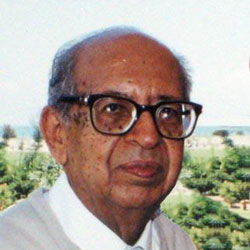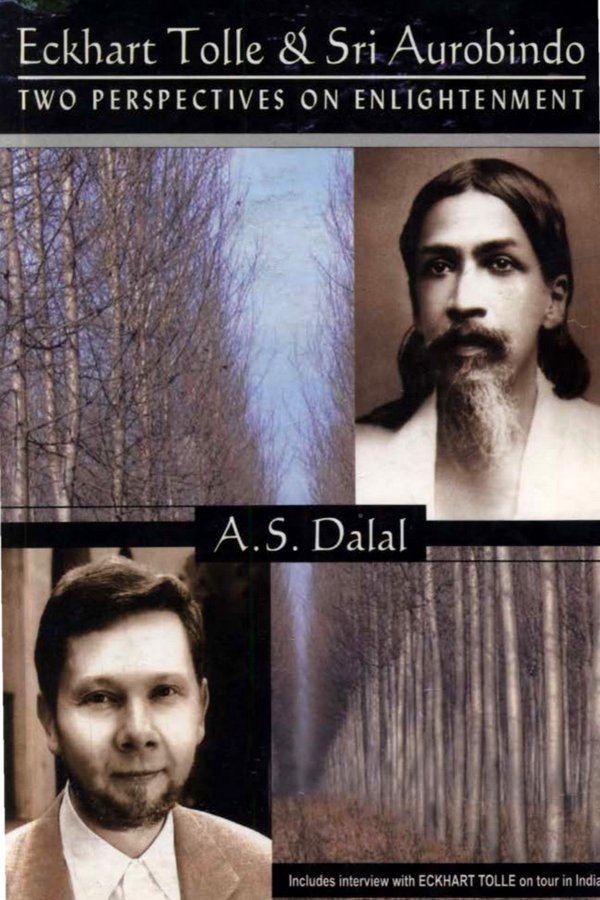Eckhart Tolle and Sri Aurobindo
Two Perspectives on Enlightenment

Are the views of two of the 20th century's most distinctive 'integrative' spiritual teachers complementary or contrasting?

- Preface
- Acknowledgments
- Publisher's Note
- 1 - Eckhart Comes to Me
- 2 - Interview with Eckhart
- 3 - Questions and Answers at Esalen
- 4 - Sri Aurobindo on the Witness Consciousness
- 5: The Teachings of Eckhart Tolle and Sri Aurobindo - Some Comparisons
- 6 - Postscript: Emerging Insights
- Appendix I - Sri Aurobindo's Teaching and Method of Practice
- Appendix II - The Three Instruments of the Teacher
- Appendix III - Sri Aurobindo's First Major Experience
- Note on Eckhart Tolle
- Note on Sri Aurobindo
- Note on the Mother
- Index

Evolution of Consciousness
Sri Aurobindo and Eckhart are perhaps the only world-teachers who have adumbrated a leap in the evolution of consciousness and the consequent emergence of a new species of beings on the planet.
Describing the evolution of consciousness with reference to the human being in primarily psychological terms, Eckhart says that the world comes into manifestation when consciousness takes on the disguise of innumerable forms on land, and in the sea and air, until the forms reach such a complexity that consciousness loses itself by identifying itself with the forms. Thus, consciousness in the human being is at present completely identified with the disguise of form, and regards itself as the mind. The ordinary, mind-identified state of the human being is therefore one of spiritual unconsciousness. The illusory identification of consciousness with the mind inevitably leads to dysfunction and suffering. As a result of the pressure of suffering, consciousness is compelled to awake from the illusion, to disidentify itself from its form, and to regain self-consciousness. The evolution of consciousness consists in the process of the awakening of consciousness from its dream of form-identification.
Dealing in more metaphysical terms about the evolution of consciousness in the world, Sri Aurobindo writes:
The reality is the infinite and eternal Divine, infinite and eternal Being, Consciousness-Force and Bliss. This Divine by his power has created the world or rather manifested it in his own infinite Being. But here in the material world or at its basis he has hidden himself in what seem to be his opposites, Non-Being, Inconscience and Insentience. This is what we nowadays call the Inconscient which seems to have created the material universe by its inconscient Energy, but this is only an appearance, for we find in the end that all the dispositions of the world can only have been arranged by the working of a supreme secret Intelligence. The Being which
Page 81
is hidden in what seems to be an inconscient void emerges in the world first in Matter, then in Life, then in Mind and finally as the Spirit. The apparently inconscient Energy which creates is in facer the Consciousness-Force of the Divine and its aspect of consciousness, secret in Matter, begins to emerge in Life, finds something more of itself in Mind and finds its true self in a spiritual consciousness and finally a supramental Consciousness through which we become aware of the Reality, enter into it and unite ourselves with it. This is what we call evolution which is an evolution of Consciousness and an evolution of the Spirit in things and only outwardly an evolution of species. Thus also, the delight of existence emerges from the original insentience, first in the contrary forms of pleasure and pain, and then has to find itself in the bliss of the Spirit or, as it is called in the Upanishads, the bliss of the Brahman.12
The concept of the evolution of consciousness in the teachings of Eckhart and Sri Aurobindo is at variance with the traditional Indian views that look upon the world either as Maya, an illusion, or Lila, a play. For, though Eckhart describes the forms taken by consciousness as illusory, he means by them something that has a temporary reality. By illusory he does not mean something that is a figment of pure imagination as is meant by Shankara's concept of Maya. Similarly, Sri Aurobindo, upholding the reality of the world in more explicit terms, states: "The world is a manifestation of the Real and therefore is itself real."13
The lofty doctrine of Mayavada (Illusionism), says Sri Aurobindo, is founded on the experience of Brahman
... as a Void of everything that is here, a Void of unnameable peace and extinction of all ... 'That' of which nothing can be said; for the universe and all that is does not even exist in That, but appears to the mind as a dream more
Page 82
unsubstantial than any dream ever seen or imagined, so that even the word dream seems too positive a thing to express its entire unreality.14
But Sri Aurobindo says to the reader:
Maya is one realisation, an important one which Shankara's overstressed because it was most vivid to his own experience. For yourself leave the word [Maya] for subordinate use and fix rather on the idea of Lila, a deeper and more penetrating word than Maya. Lila includes the idea of Maya and exceeds it; nor has it that association of the vanity of all things, useless to you who have elected to remain and play with Sri Krishna. ...15
(The Mahabharata portrays Krishna as playing with the cowherd-eases, the Divine engaged in a play with human souls.)
Eckhart does see the aspect of Lila, a divine game, which God seems to be playing by creating millions of life-forms in the world and replicating each form millions of times. However, Eckhart regards it as a play that has a significance beyond the sheer joy of playing. As a result of the manifestation, an evolution of consciousness takes place, for when consciousness becomes again conscious of itself after having been loser in unconsciousness in the process of manifestation, the regaining of self-consciousness leads to a more evolved and deeper state of consciousness than what it was before it became lost in unconsciousness. Sri Aurobindo, likewise, says that the concept of Lila strikes into "the secret of delight at the core of things," but he adds: "There is more here in the world than a play of secret delight; there is knowledge, there is power, there is a will and a mighty labour."16
... the world is not either a creation of Maya or only a play, līlā, of the Divine, or a cycle of births in the ignorance from
which we have to escape, but a field of manifestation in which there is a progressive evolution of the soul and the nature in Matter and from Matter through Life and Mind to what is beyond Mind till it reaches the complete revelation of Sachchidananda in life.17
Page 83